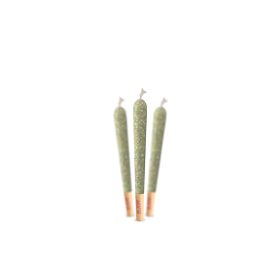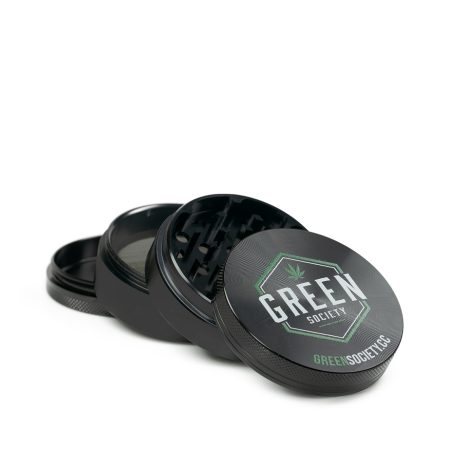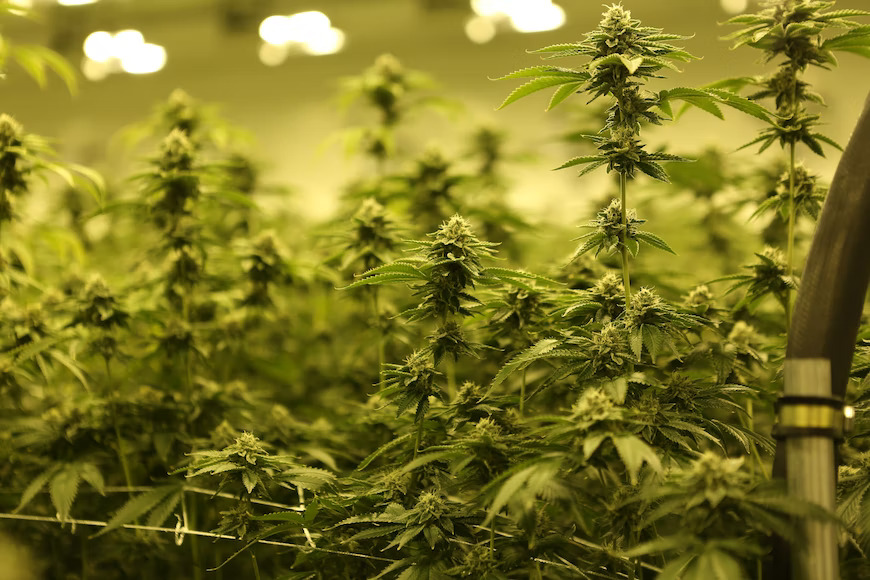Growing Marijuana, Marijuana
Introduction to Weed Cultivators
Weed cultivation includes different activities beyond harvest. The entire process includes developing, curing, growing, and trimming cannabis. Weed Cultivators may opt to set their cultivation facility indoors, outdoors, or at any secured location.
Anyone can be part of the cannabis industry. However, weed cultivators should conduct it in line with state and local laws. The top companies producing cannabis products in Canada include brands such as 91 Supreme, Atomic Concentrates, and Baked Edibles.
History of Weed and Usage
Cannabis originated from Central Asia. One of the native strains in the wilds, along with the Hindu Kush, scattered from Pakistan and Afghanistan ranges. Contrary to many assumptions, Marijuana is beyond leisure. It also utilizes as a food additive and textile material. Ancient Chinese are believed to be intoxicated at funerals. This discovery is confirmed by remains found on burial grounds.
Benefits of Cultivating Weed
Weed cultivation is more than financial gains. Growing cannabis in your selected area can reap all-around satisfaction. Check the following benefits weed cultivators enjoy.
1. Weed can alleviate pain.
Weed are known for their health benefits. Cannabis can aid chronic suffering. The very reason for its popularity with cancer patients. Aside from these are the following:
- Assists in weight loss
- Regulates diabetes and its prevention
- Considered effective in handling depression and anxiety.
- Successfully treats glaucoma
2. Accessibility
Securing weed stocks can be difficult in some situations. It can be an additional hassle when a person is deprived of its supply. Another advantage of weed cultivation is its accessibility and convenience for regular users, particularly those with medical conditions.
People with indoor cultivation facilities have the upper hand in their possession. This can save them from inconvenient transport and exhaustion from its acquisition.
3. Affordability
According to the State of the Cannabis Cultivation Industry Report, about eighty (80%) of weed cultivators grow their cannabis at home. Indoor weed cultivation facility is more affordable compared to other setups. It can cut expenses, especially growing cannabis within the home. Yet, it cannot promise lower utility costs for cannabis growers. Ultimately, it is cost-effective given all the other bills to pay.
4. Quality Control
A weed cultivation facility allows users and cannabis cultivators to assess its quality time-to-time as some consumers have sensitive health situations. Making sure it’s free from molds, pests, and other damages can ease their worries.
Challenges of Weed Cultivation
These challenges are based on research conducted by the State of the Cannabis Cultivation Industry Report (2021). A study led by Cannabis Business Times. This features a survey analysis of weed cultivators as research participants.
1. Species Regulation (Pest Control)
Like other plants, weed is also prone to insect/pest obstruction. Without proper care and maintenance, cultivating high-quality cannabis can be challenging. For weed cultivators, they must employ pest regulation in their routines. State of the Cannabis Cultivation Industry Report asserts thirty-one percent (31%) of weed cultivators face this challenge.
2. Yield Appreciation
As stated in the previous study, thirty percent (30%) endure difficulties in yield appreciation. The production cost for the cannabis industry has become grueling with the emergence of covid-19. It causes delays and supply shortages to weed cultivators. All these challenges resulted in a price increase in weed paraphernalia.
3. Market Competition
As every industry shifts to consumer-driven enterprises, the cannabis cultivation industry is not exempted. Cannabis consumers have the widest option and demand specified quality preferences.
For weed cultivators, this involves their products’ terpene or cannabinoid content. The combination of terpenes and cannabinoids can produce a euphoric effect for cannabis consumers. About twenty-eight percent (28%) of weed cultivators agree with this demeanor.
Alternatively, the market continuously expands for weed cultivators. This is expected with consumers’ particularity in quality, brands, and specifications.
Ways to Overcome Weed-Cultivating Challenges
Dealing with the challenges for cannabis companies is part of development progress. The advice can moderate possible circumstances faced by cannabis growers. Applying this may change the game for growing operations.
1. Strategic Business Planning
Likewise to other business activities, business planning is a no-brainer. Strategic business planning helps weed cultivators keen on supervising the entire operation. It doesn’t end with producing mediocre cannabis products.
Emphasizing edge among other companies can draw positive results. Jumping to current trends or bandwagon without extensive research may result in disdaining. The consistency, supervision, and criticality practices in each phase can benefit countless growers.
2. Regulating Operational Costs
Managing operational costs efficiently amid growing competitors can profit in cannabis production. But having business funds to good use is complex. It requires dismissing impulsiveness in the decision-making process for the cannabis world.
On the other hand, trading the quality of weed products drives cannabis consumers away as they become aware of legalities and selective in the great resource.
3. Assessment of Plant Material
Regular plant inspection is the key to high-quality cannabis plants. With this procedure, cannabis growers should keep in touch with the research community. These consumer products are highly at-risk of pests and other damaging organisms. That’s why it is advised to monitor the state of cannabis.
How to Cultivate Weed Properly
Cultivating weed properly can ensure the welfare of their growth. To grow cannabis, weed cultivators should know the basic equipment and procedure.
Equipment Needed for Weed Cultivation
1. Grow a Tent or Greenhouse
Having a grow Tent or Greenhouse is important for indoor growing cannabis. It is essential for controlling humidity, temperature, and air circulation. Choosing the appropriate product can help plants grow healthily.
2. Pots
Selecting the appropriate pots for your seeds is also noteworthy. There are many types to choose from. Weed cultivators may opt for standard homemade, flower, or smart pots. Anyhow, everything can do as long as the cannabis plant can breathe.
3. Ventilation System
A proper ventilation system is a must for indoor growing. It can regulate the particles circulating in the facility. For weed cultivator starters, they can use fans in their operations.
4. Temperature Regulator
Cannabis production is temperature sensitive. The reason why weed growers choose indoor growing. They can regulate the sunlight, air, and other particles surrounding their cannabis products.
5. Lighting Equipment
Lighting equipment is ideal for indoor season yields. Weed cultivators can observe the plants’ behavior in lighting setups. A helpful tip is that indoor weed growers should protect everyone against UV exposure.
6. Respirators
In connection with the previous point, cannabis growers should always wear respirators. Air contaminants are present in the growing cycle. These contaminants are mostly generated from harsh pesticide chemicals. Remember to include a federally licensed hygienist in your team.
7. Security Cameras
Security cameras are for monitoring and safety purposes of everyone. These may prevent potential trespassing and stealing attempts for cannabis grower facilities.
8. Trimming Tools
Cannabis growers must consider investing in higher-quality trimming tools. Through this, plants can prosper and yield abundantly.
Weed Cultivating Procedure
There are six stages of cannabis growth. Every phase has distinct demands. While it is always subjected to every planting procedure, weed cultivators must learn the bare minimum.
1. Germinating Stage: 1-7 days
Make sure to have mature seeds. This process may not sprout the seed. Mature seeds are usually in lighter to a darker shades of brown. They are dry and difficult to touch.
Please place it in a moist toilet paper or cup of water to germinate. Sunlight exposure and moisture stimulate it. Wait for the roots to appear for the next stage.
2. Seedling Stage: 2-3 weeks
During the seedling stage, the sprout is extremely fragile. Growers should expose this to sunlight, moistened soil, and mid-humid spots. With its weak stage, it should not be overwatered.
The seedling is expected to develop below six leaf fingers. If it surpasses the number, the seedling welcomes the vegetative phase.
3. Vegetative Stage: 2-8 weeks
During the vegetative stage, the plant continuously develops leaves and prospers. It grows extended branches, nodes, and a stable root system. Weed growers should increase their water intake and add nutrients. Expect cannabis to grow up to 2-3 feet.
For indoor plant growers, soaking cannabis under light for an 18-hours light cycle and a 6-night period may benefit more. It saves time and energy more than 24-hr exposure.
4. Pre-Flowering Stage: 1-2 weeks
After 7 to 14 days, the cannabis plant proceeds to the pre-flowering stage. Weed growers can now determine sex. Trim them as needed. These are the signs:
- Female: A pair of pistils. This contains the female flower’s reproductive parts.
- Male: Small greenish sacs filled with pollen.
- Hermies: A plant with both female and male features. Eliminating it may prevent your other cannabis from destroying.
5. Flowering Stage: 6-8 weeks
The flowering stage occurs when plants absorb light for less than 12 hours daily. With cannabis, it demands 10-12 hours of full darkness. These plants are ready to harvest once the pistil colors on cola buds bloom and transform to a reddish hue. At the same time, trichome heads must change to an amber color. The latter indicates higher tetrahydrocannabinol (THC) and cannabidiol (CBD).
Cannabis plants then enjoy warmer weather, mid-humid, and blooming nutrients. If the trichomes fall off, it indicates failure in monitoring its perfect growth. This also weakens the THC or CBD effects. Cannabis growers may need to restart a new batch.
6. Harvesting Stage
To prepare for the harvesting stage, cannabis should slice into small branches. This reduces the drying process for cannabis growers. These pieces must be hung and suspended in a cool, unlit room. Cannabis commercially available should remain within 7-14 days and be dried with 40 to 50% humidity. This is essential to prevent harboring microorganisms.
Conclusion
Weed cultivation is undoubtedly an interesting topic. Some countries, like Canada, allow the full legal operation of the cannabis industry. Regardless of tireless advocates reinstating discrimination against cannabis consumers and cannabis companies, it remains strong in the market as an anxiety and pain medication alternative. Check out the best strains offered by Green Society today.














